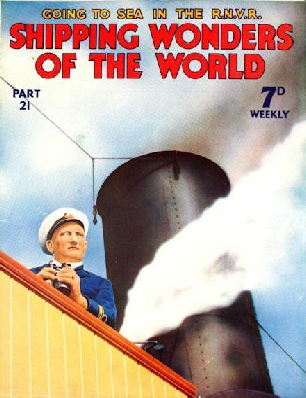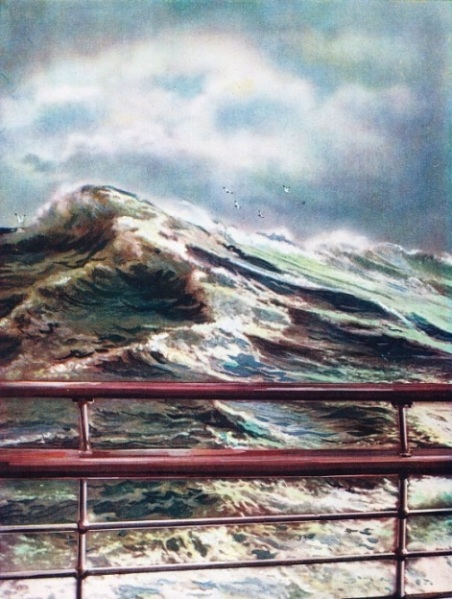
© Shipping Wonders of the World 2012-



Part 21
Part 21 of Shipping Wonders of the World was published on Tuesday 30th June 1936.
This issue included a colour plate illustrating “The Stormy Seas of the Atlantic Ocean” which was previously featured on the cover of part 6.
The Cover
This week’s cover shows the Captain of the SS Eston, a P & O coastal cargo boat, on board ship. The Eston is a freight service boat on the home trade, and has a gross tonnage of 1,487, a length of 240 ft 2 in, a beam of 36 ft 1 in, and a depth of 19 ft 1 in.

Contents of Part 21
The Discovery of America
The story of Columbus’s discovery of the New World, concluded from part 20.
A Modern Motor Yacht
A description of the vessel, the Aronia, typical of many modern yachts and thus not a merchant ship, is included in this series for convenience. She is propelled by diesel engines and her hull is of a form known as the “toothpick” type. She was built and engined in Denmark and she has a hull form somewhat similar to that of a torpedo-boat destroyer. This is particularly marked in the cruiser stern, the arrangement of propellers and the spade rudder. At one stage this yacht was owned by Jack Billmeir, owner and founder of the Stanhope Steamship Company.
This is the sixteenth article in the series on Merchant Ship Types.
The Royal Naval Volunteer Reserve
Since its formation in 1903, in place of the older Royal Naval Artillery Volunteers, the Royal Naval Volunteer Reserve has grown in importance as well as in numbers. A volunteer organization, with divisions in many parts of Great Britain, the RNVR offers to the sea-loving man who lives ashore the opportunity to train for naval service. The RNVR, the “Wavy Navy”, as it was affectionately called during the war of 1914-18, supplies young men with the opportunity of seriously serving the sea in their spare time. Signalling is rightly regarded as a highly specialized job and it was a a wonderful tribute to the efficiency and training in the RNVR that a man who was, after all, an amateur, should have been given this post. After the war the RNVR was reorganized and many divisions and sub-divisions were formed in different pars of the country. This chapter is the third article in the series Going to Sea.
There is a separate chapter on the “The Royal Naval Reserve”.
The Stormy Seas of the Atlantic Ocean (colour plate)
THE STORMY SEAS of the Atlantic Ocean do not present such dangers to the modern liner as they did to the earlier sailing vessels. This photograph was taken from the aft deck of the tourist class quarters in the Norddeutscher Lloyd liner Bremen, 51,656 tons gross. This deck is 36 feet above the water-line. The velocity of the wind which raises such seas is between 34 and 40 knots, and would be described as a fresh gale, Number 8 in the Beaufort wind scale. A hurricane, the strongest wind that ever blows, is Number 12 in this scale, which is invariably used by navigators to denote the strength of the prevailing wind. Number 0 in the scale, on the other hand, indicates a wind velocity of under one knot. Clarence Winchester noted in the editorial to this issue “Of all the covers that have so far appeared in Shipping Wonders of the World, those that have aroused the most interest have been the cover of Part 3 and the cover of Part 6. This week our colour plate is the picture of a big sea, taken from the deck of the Bremen - a particularly fine photographic impression of the stormy North Atlantic.”
